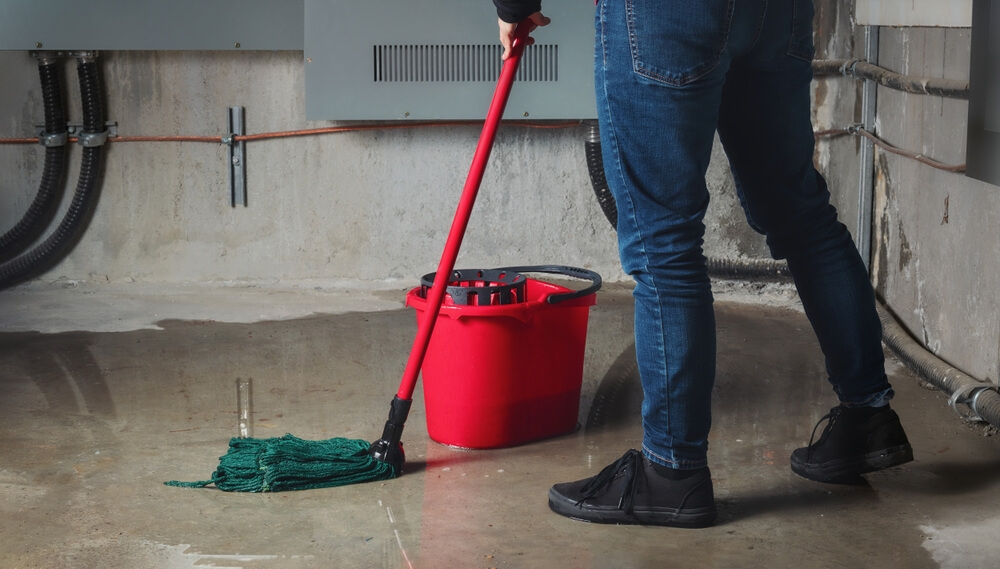
If you are not redirected within 30 seconds, please click here to continue.
Samedi: 10h – 16h HAE

If you are not redirected within 30 seconds, please click here to continue.
If you are not redirected within 30 seconds, please click here to continue.
How to Cut Your Losses after a Disaster Hits Home

When a disaster hits a home, it causes incomprehensible losses. The aftermath of a house fire or water damage can be traumatizing. However, if acted upon quickly, some damage can be reversed and losses can be cut short.
Here’s what you should do immediately after a disaster strikes your home:
- Request an Inspection: Request a health and safety inspection for your house. The province assigns the inspection team. They assess the damage and determine if the electrical system of your home is safe and restored.
- Assess and document- Once your home is safe to enter, record the damage and document all of your home’s contents in an inventory list.
- Start the claim- Notify your insurer as soon as possible and give them a detailed brief of the incident and losses, so you can begin the recovery process at once.
- Secure your property- Prevent further damage to your property by turning off the water, covering leaky roofs, and boarding up broken doors and windows.
Actual Cash Value vs. Replacement Cost Coverage
If you have “Actual Cash Value” coverage: you will receive the amount of money needed to return your home or its contents to its market value before the disaster struck. With “Replacement cost” coverage: you will receive the amount of money needed to replace your home or its content, up to the specified limit of your policy.
Insurance claims are typically paid in a single payment or multiple payments as the claim is processed.
Salvaging Home Contents Affected by Flooding
If your home is flooded with toxic water, then you should call professionals because the tainted water can be a health risk. However, if the water is uncontaminated, then pump out the water slowly, and take steps to reduce the humidity in your house by drying everything, including flooring and walls.
- When dealing with a flooded home, enter wearing rubber boots, and masks.
- In case of flooded basements, wait for the water to retreat, before you start pumping it out.
- Gently air-dry your indoors, and increase the airflow. Use dehumidifiers and fans.
- Haul wet items, like upholstered furniture and curtains to your garage where they can dry.
- If your furniture is made of hardwood, then wash away the sediments on its surface and air dry it in a shaded area with good circulation. Do not sun dry them. Particleboard furniture is not worth saving and should be discarded.
- Use a wet vacuum to suck water out of soggy carpets and mop up the rest of the floor.
Flood Cleaning Tips
- Separate sodden photographs and paintings from the frames, and albums, and wrap them in white paper towels.
- Clean the dirt and debris settled on fragile items with soft cloth and brushes.
- Rinse the photographs in clean water and air-dry them.
- Transfer damp objects and documents that cannot dry within 48 hours, into the freezer. Freezing will prevent moulding and give you time to attend to things that can be recovered immediately.
- Wash off the mould in smaller areas with a mixture of detergent and hot water. However, if it covers a larger area, then hire trained professionals to clean it up.
- Thoroughly wash and disinfect all utensils and dishes.
Salvaging Home Contents Affected by Fire
In order to mitigate the losses caused by fire, it is crucial to take immediate measures before the ash settles on your home and its contents. However, cleaning fire damage is both time-consuming and tricky. Hence, you need to take precautionary steps before starting the rehabilitation process.
- Do not enter your home, until the fire department permits it.
- Wear long clothes and safety gear.
- Open doors and windows to get rid of residual smoke and increase ventilation.
- Dispose of unsalvageable items.
- Dry the wet items drenched in water before starting the clean-up.
- Work outdoors when cleaning smoke damaged items.
- Most solvents and cleaning materials are flammable so make sure there is no flame or spark nearby.
Restoring Smoke Damaged Home Items
If your home items are not scorched but have suffered smoke damage, you have every chance of salvaging them.
You start by removing the soot:
- Vacuum all surfaces of the furniture and upholstery with the nozzle slightly above the surface.
- Do not scrub the surfaces, use a dry chemical sponge for all wooden items
- Use a solution of oil soap and warm water to gently wipe the soot
- Air dry all the items, after wiping them clean
Now that the soot is gone:
- Sand the charred areas on your furniture with sandpaper, apply a cream polish on all wooden surfaces and let them air dry.
- Machine wash the fabrics in cold water and hang them outside to dry in the sun.
- Use of vinegar, fragrant restoration creams and oil polishes help in removing the smoke odour, however, if the odour is too strong, then setting up an O-zone generator in the affected rooms, helps in eliminating the smell.
- If the damage is contained, then continue the restoration project on your own, however, if the scale of the damage is widespread, then do not hesitate to take the help of reliable restoration professionals.
Be it fire or flood, they can derail a family’s life for a substantial amount of time, however, if acted upon immediately, the losses can be cut short and things can return back to normal very quickly.
How about planning for the bad times, during a good time, get the latest home insurance quotes at Rates.ca.
Get money-saving tips in your inbox.
Stay on top of personal finance tips from our money experts!










